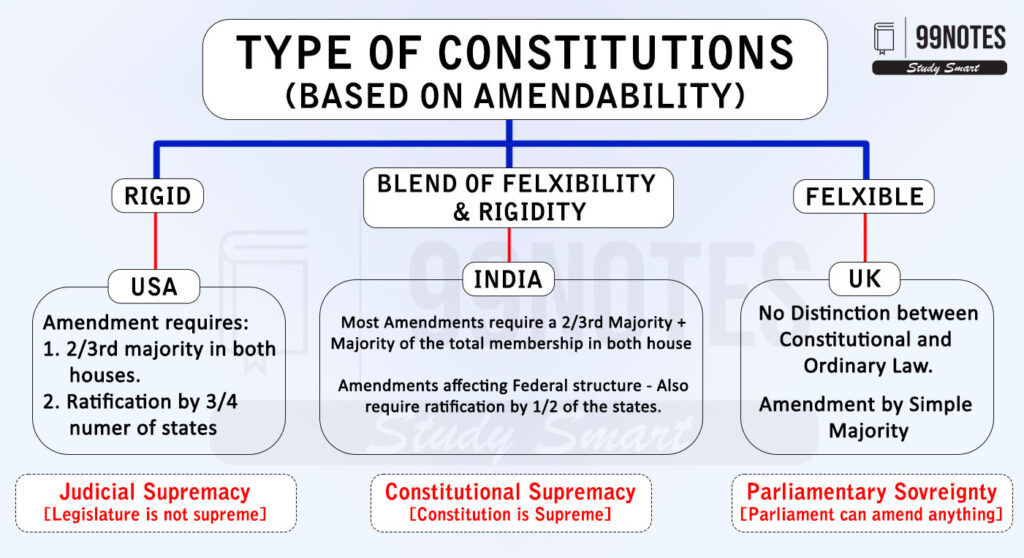Amendment of the Indian Constitution
“While we want this Constitution to be as solid and permanent as we can make it, there is no permanence in a Constitution.”
-Jawaharlal Nehru
The Constitution of a country is the fundamental law of the land. It has higher sanctity and more permanence than ordinary legislation. However, a democratic constitution has to be particularly responsive to the changing conditions. A government based on popular sovereignty cannot ignore the changing will of the people.
The power of the Indian Parliament to amend the Constitution is given in Article 368 in part XX of the Constitution. It provides that Parliament may alter any provision of this Constitution through addition, variation, or repeal in accordance with the process outlined in this article when exercising its constituent authority. However, this is subject to the ‘doctrine of basic structure’ introduced by the Supreme Court in the Kesavanand Bharti Case.
Nature of the Amendment Process
Constitutions are generally classified into ‘rigid’ and ‘flexible’ depending on how they can be amended.
- Constitutional theorist AV Dicey defines two types of Constitutions:
- The United Kingdom, with an unwritten Constitution, is the best example of a very flexible constitution, as there is no distinction between legislative power and constituent power. The Parliament can change the Constitution through an ordinary process.
- The United States, which has a written Constitution and a federal polity, is considered a rigid constitution. In a federal setup, it is crucial to involve the legislatures of the states.
- India has adopted a synthesis of both features, which means amending the Indian Constitution is neither easy nor difficult. In the words of KC Wheare, the Indian Constitution ‘strikes a good balance between flexibility and rigidity”.









